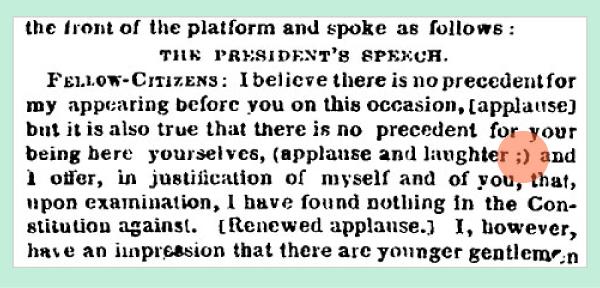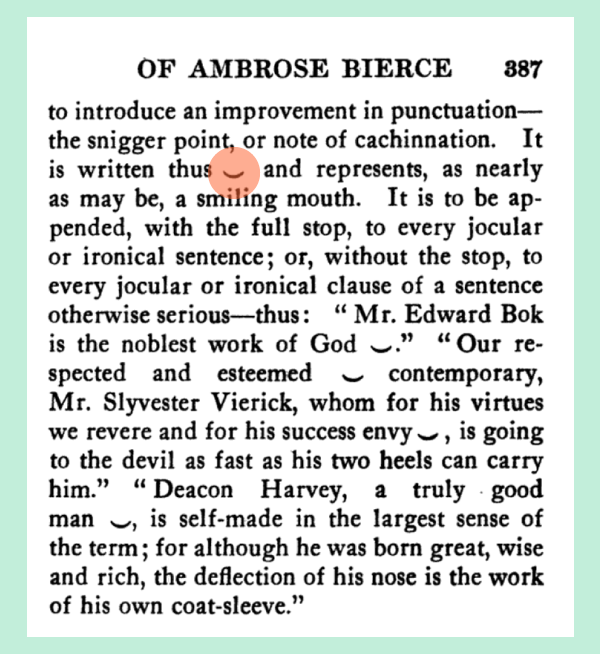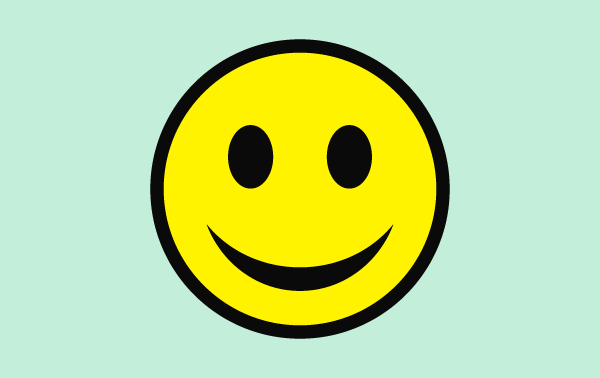Many of us think that use of emoji and emoticons are a recent development. The truth is, emoticons have a rich and complex history dating back more than a century. Long before smartphones were even thought of, emoticons were part of our society’s communication.
Before we begin, it’s important to point out the difference between an emoji and an emoticon. When an emotion is represented through typography, we refer to it as an “emoticon.” If it is a cartoon depiction of an emotion, we call it an “emoji.” Emoticons were the building blocks for the graphical emoji we use today.
Now, let’s look at the surprisingly long history of emoticons and emoji.
1862: Abraham Lincoln
The New York Times reported, “A historical newspaper specialist at the digital archival company Proquest believes he has found an example of a sideways winking smiley face embedded in The New York Times transcript of an 1862 speech given by President Lincoln.” The “winking smiley face” is a semicolon followed by closing parenthesis.

While it’s possible it could have been meant to represent a winking face, experts speculate that the use of the semicolon followed by the closing parenthesis could have been a typo or an antiquated way of using punctuation within brackets. Sadly, this is a question we can merely speculate the answer to.
1881: Puck Magazine
In a small section in 1881, Puck Magazine included “typographical art,” or early emoticons. The emotions depicted in type were joy, melancholy, indifference, and astonishment. This could be the first undisputed use of emoticons in print.
1912: Ambrose Bierce
Ambrose Bierce was an American writer who proposed an “improvement to punctuation” that he named the “snigger point.” It would appear like smiling mouth and be used to represent irony or sarcasm. Obviously, Bierce wasn’t able to make this standard, but he saw a need to represent emotion with our punctuation.

Other writers proposed additions to punctuation to denote emotion throughout the years, as well. None were widely accepted.
1963: Harvey Ball
Harvey Ross Ball, an American graphic artist, created the familiar yellow smiley face. He created the image when he was commissioned to make a graphic to raise morale at an insurance company after it went through many mergers. It took him only 10 minutes to make and he was paid just $45 for his work. The smiley face became immediately popular, although it’s unclear whether morale at the insurance company was raised.

1969: Vladimir Nabokov
Russian-born American novelist Vladimir Nabokov expressed how he wished there was a way to express emotion with typography in 1969. In an interview with the New York Times, Nabokov answered a question about how he would compare himself to other writers by saying, “I often think there should exist a special typographical sign for a smile – some sort of concave mark, a supine round bracket, which I would now like to trace in reply to your question.”
1983: Dr. Scott Fahlman
Dr. Scott Fahlman, a professor and computer scientist, is often said to have invented the emoticon. He noticed that some people were being misunderstood in online bulletin board used by the computer science community. “If someone made a sarcastic remark, a few readers would fail to get the joke, and each of them would post a lengthy diatribe in response,” said Dr. Fahlman.
The members of the group recognized a need for a way to mark when a post was supposed to be a joke and when it was supposed to be funny. Fahlman suggested using a smiley face for jokes and a frown to indicate a serious post.

From there, the emoticon evolved. People found new ways to use type to express their emotions in online communities and the idea grew from just indicating whether something was funny or serious to expressing a wide range of emotions.
1998: Shigetaka Kurita
Shigetaka Kurita is an engineer and interface designer who worked for the Japanese phone company NTT Docomo and is credited with being the creator of the emoji. When working on a way for customers to communicate through icons, he created the first set of 176 emoji, which has grown to more than 1,000 emoji.
2010: Unicode
The Unicode Consortium is a nonprofit group that works to maintain text standards across computers. Multiple tech companies petitioned Unicode to recognize the emoji and ensure they were recognizable across all devices. Unicode was accepted in 2010 and is now in charge of the lengthy submission and approval process for the creation of new emoji.
As you can see, emoticons and emoji have a long history that dates back long before we ever began texting each other. As these seemingly insignificant things become huge parts of how we have conversations, it’s important to understand how to teach their history.






